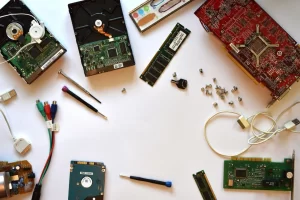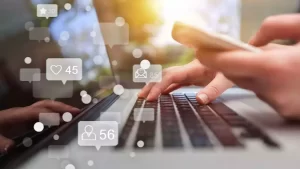The Future of Education – Tech Innovations in the Classroom

Widespread Internet access has accelerated the pace of technology innovations in the classroom. Cutting-edge hardware firms now produce devices designed to meet educational needs.
Educators are learning how to utilize classroom technology to track student progress. Teachers also use it to provide students with personalized learning resources and monitor behavior.
Adaptive Learning Platforms
Like medtech, agritech, and fintech, edtech has the potential to transform the landscape of education. The technology behind adaptive learning platforms is one example of this. These programs use artificial intelligence to adapt educational content to each student’s unique abilities and needs.
Adaptive learning is facilitated by a web-based software that guides students along the path of their education. The system is able to track students’ progress and deliver personalized information to them in real time.
These systems can assess a student’s prior knowledge and skills before assigning them to an appropriate level for the course, says Kathe Pelletier. They also identify a student’s weak areas and tailor future lessons to plug these gaps in learning.
This type of personalized learning is especially effective with under-achievers. This group tends to find the program more engaging and supportive, resulting in improved academic performance. The technology behind adaptive learning also saves teachers time and gives them the opportunity to focus on students’ individualized needs.
The Metaverse
The metaverse is a virtual world incorporating Augmented Reality and Virtual Reality technology that has the potential to revolutionize online communication, collaboration and learning. It can improve education in several ways by creating immersive learning experiences that are tailored to the needs of each student.
This type of learning could be used to teach students about different cultures and history, or even the physics of a space mission. It can also be used to help children understand the world around them by showing them a documentary about famine, pollution or climate change in a remote country.
However, there are a few barriers that need to be addressed before the metaverse can be fully used in education. These include network connectivity and reliability, standards and certification, and organizational readiness. Fortunately, there are initiatives working to address these issues. For example, the Khronos Group is developing OpenXR, a royalty-free standard that will allow developers to create VR and AR experiences across platforms.
Artificial Intelligence
As the use of technology in schools evolves, educators have a greater opportunity to teach students valuable skills that will enable them to thrive in our fast-paced world. AI can be used to automate administrative tasks and give educators more time to focus on their students.
Educators are aware that some new functionality can have unintended consequences. For example, generative AI can create text that is similar to other sources, raising concerns about plagiarism. Educators also recognize that AI can amplify biases and need to develop strategies for eliminating them.
Education software with predictive capabilities can transform data like assessment results, grades, behavior incidents and attendance into actionable information that teachers and support staff can use to proactively identify red flags. It can help predict the likelihood of a student not graduating on time, for example, and allow educators to offer more targeted interventions to at-risk students. The potential for these new technologies to improve educational outcomes is immense, but it will require a culture of innovation and cooperation between educators, students and administrators.
Virtual Reality
Virtual reality is a powerful tool for education, and it can improve student learning and engagement. VR can help students visualize abstract concepts and ideas and build connections to them. Moreover, it can also make learning fun and interactive, encouraging creativity.
While integrating VR into education requires a careful plan, educators should consider how it will contribute to achieving pedagogical goals of the lesson. Teachers can also use augmented reality (AR) to bring concepts to life. For example, they can place a funnel over an AR video of a tornado to demonstrate how these destructive storms work. Students can also take an AR tour of a beehive to learn how these insects cooperate to support their community.
VR can also enable field trips for students who cannot travel to different locations or have mobility limitations. They can visit historic sites, practice their language skills with native speakers, or conduct experiments in a safe environment. These virtual experiences will teach students about the world beyond their own and foster empathy and cultural competence.








